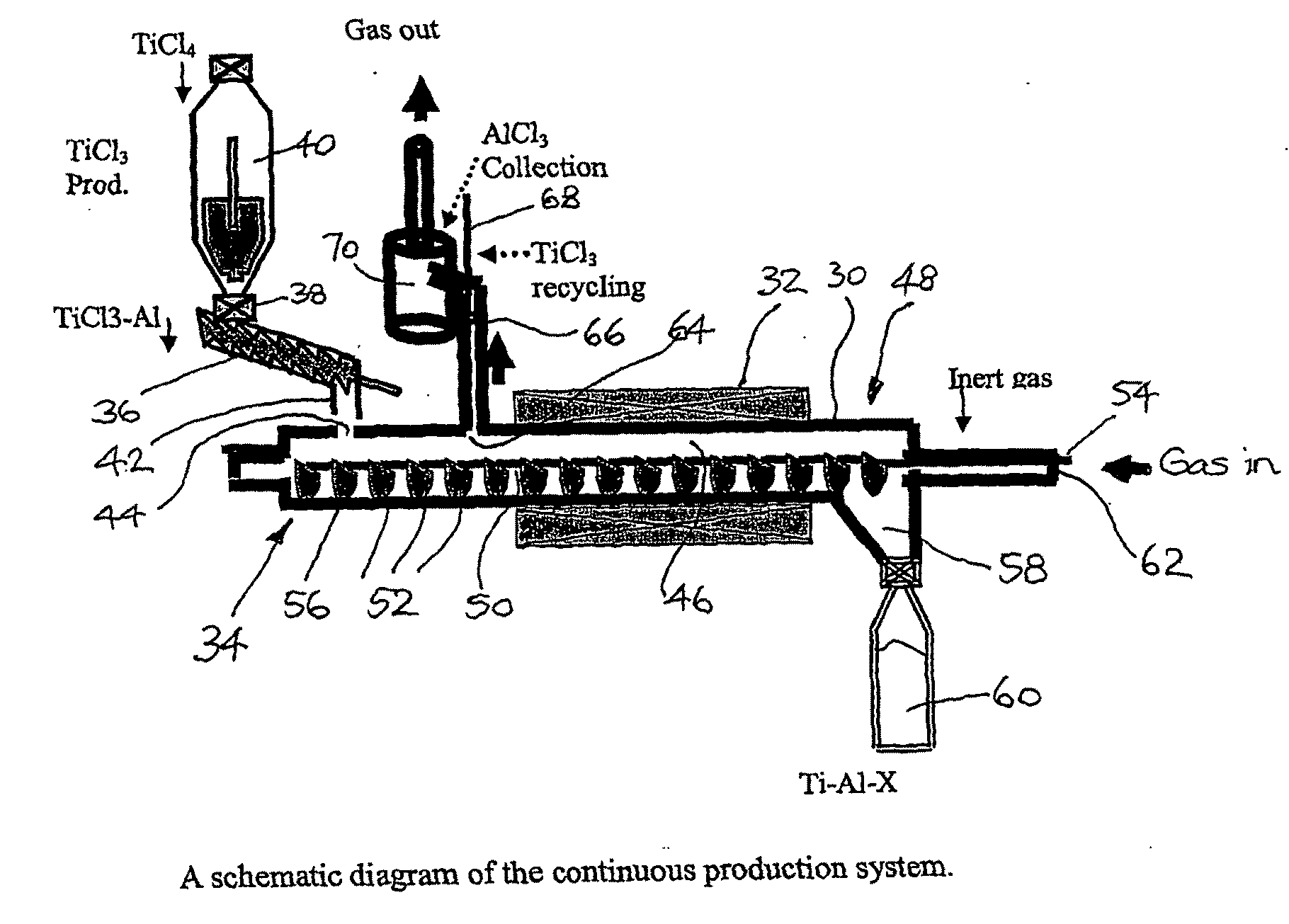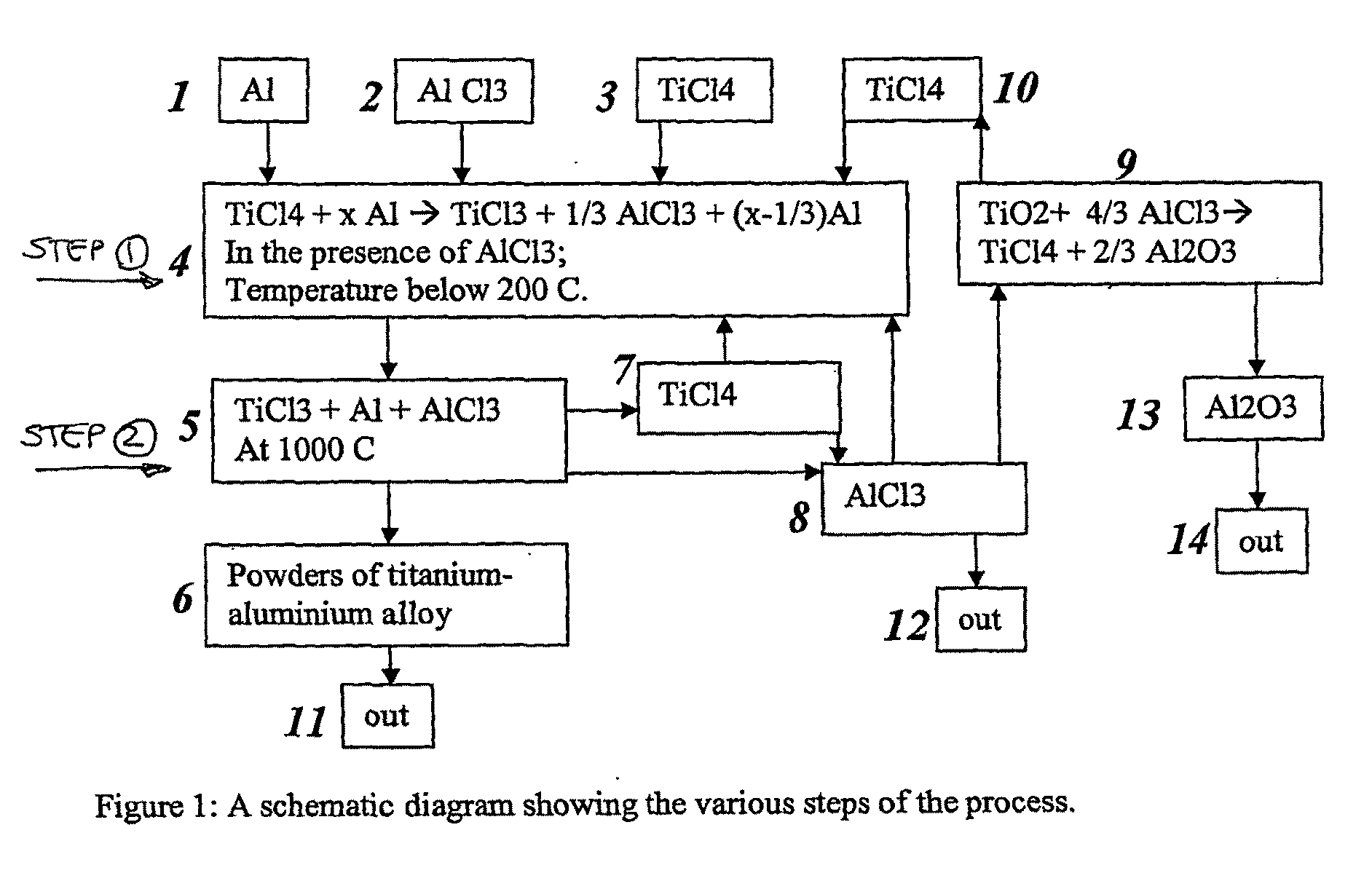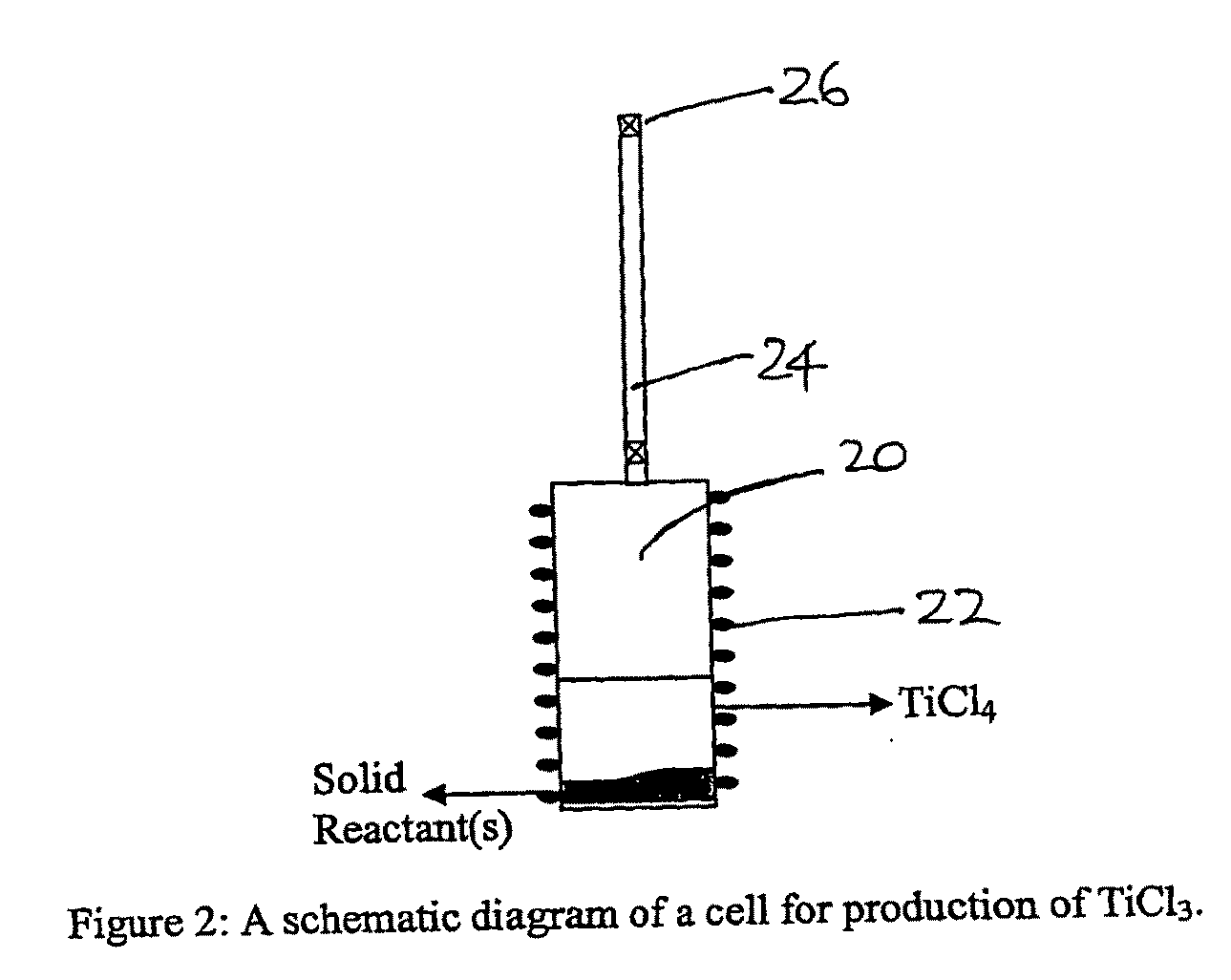Apparatus and Methods for the Production of Metal Compounds
a technology of metal compounds and apparatuses, applied in the direction of manufacturing converters, furnace details, furnaces, etc., can solve the problems of difficult and expensive preparation, difficult and expensive handling, and limited wide use of highly reactive reducing agents, and achieves a less expensive and more controllable process. , the effect of low aluminium conten
- Summary
- Abstract
- Description
- Claims
- Application Information
AI Technical Summary
Benefits of technology
Problems solved by technology
Method used
Image
Examples
example 1
[0152]15 g of Al powder<15 micrometres
[0153]15 g of AlCl3
[0154]125 ml of TiCl4
[0155]At 110° C., there is a thermal runaway effect. The temperature increases rapidly to 176° C. The cell is then cooled down and the remaining TiCl4 is removed. 239 g of materials remain in the cell, equivalent to the reduction of around 122 ml of TiCl4, corresponding to an efficiency of ˜97%. The resulting intermediate products (TiCl3+Al+AlCl3) have a violet colour and are usually in the form of an agglomerated powder, requiring crushing before proceeding into the reaction in Step 2.
example 2
[0156]15 g of Al flakes, 1-2 micrometres thick,
[0157]15 g of AlCl3
[0158]125 ml of TiCl4
[0159]The cell shown in FIG. 2 is open to 1 atmosphere under Argon, due to the beneficial influence of the AlCl3 catalyst. At 110° C., there is a thermal runaway effect. The temperature increases rapidly to 172° C. The cell is cooled down and remaining TiCl4 is removed. 230 g of materials remain in the cell, equivalent to the reduction of around 116 ml of TiCl4, corresponding to an efficiency of ˜93%. Total reaction time was 15 minutes.
example 3
[0160]For Al powders with a particle size less than 44 micrometres, the addition of AlCl3 to the starting materials enabled the reaction to proceed at 1 atm, producing intermediate products adequate for production of titanium aluminides. For example, starting from a mixture of 15 g of Al powder (3 together with 125 ml of TiCl4 lead to formation of around 150 g of intermediate products (TiCl3+Al+AlCl3) after heating at 136° C. for 1 hour. For operation at 1 atm, the reaction between TiCl4 and Al without AlCl3 is usually slower than under high pressure in a closed vessel, as the reaction would then be mostly limited to liquid-solid reactions.
[0161]As has already been noted earlier, carrying out the reaction of Step 1 at temperatures higher than 220° C. can cause a number of difficulties, such as the reaction proceeding in an uncontrollable manner so that the temperature rises uncontrollably, resulting in formation of unwanted products and a slowing of the reaction rate. In some experi...
PUM
| Property | Measurement | Unit |
|---|---|---|
| temperature | aaaaa | aaaaa |
| temperature | aaaaa | aaaaa |
| temperature | aaaaa | aaaaa |
Abstract
Description
Claims
Application Information
 Login to View More
Login to View More - R&D
- Intellectual Property
- Life Sciences
- Materials
- Tech Scout
- Unparalleled Data Quality
- Higher Quality Content
- 60% Fewer Hallucinations
Browse by: Latest US Patents, China's latest patents, Technical Efficacy Thesaurus, Application Domain, Technology Topic, Popular Technical Reports.
© 2025 PatSnap. All rights reserved.Legal|Privacy policy|Modern Slavery Act Transparency Statement|Sitemap|About US| Contact US: help@patsnap.com



